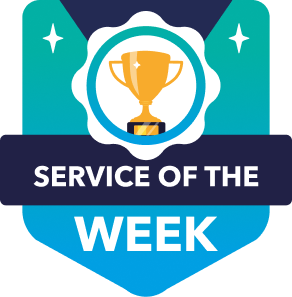The best affiliate marketers are always on the hunt for better ways to promote affiliate products to their target audience.
Even if their sites are attracting lots of organic traffic, it's always wise to have other traffic sources where highly qualified leads click on their affiliate link in the hopes of converting them into sales.
If you're in the same boat with these` marketers, have you ever considered using LinkedIn as part of your affiliate marketing strategy?
The social media platform is synonymous with building an online presence for recruiters and brands to find and hire users.
But could it also be a channel where you can sell affiliate products successfully?
This post will discuss if it's possible (it is!) and how you can do it.
LinkedIn Facts and Stats
Let's get one thing out of the way: LinkedIn isn't one of the most popular and widely used social media platforms. But as a B2B social network thus far, no one else is as good.
Below are some of the cold hard facts that make the platforms one of the best:
- One hundred eighty million users (almost 25% of its total userbase) of the platform are senior-level influencers (LinkedIn, 2021).
- 39% of its users pay for a subscription to unlock the platform's premium features (Kinsta, 2021).
- 52% of people look up to LinkedIn to help influence their buying decisions (Demandbase, 2018).
- 44% of LinkedIn users have an annual salary of $75,000, which is more than the median in the U.S. (Kinsta, 2022).
- LinkedIn is believed to be 277% more effective in generating leads than Facebook and Twitter (Hubspot, 2020)

From the statistics above, it is clear that LinkedIn houses the big hitters from the top organizations in their respective industries. Their words can shape the minds of their followers and encourage them to make informed purchasing decisions.
Also, LinkedIn users have the money and buying capacity to purchase products and services. It is just a matter of developing a lead generation campaign that will attract the right people into your funnel, which LinkedIn has no problem with either.
How Can Affiliate Marketing Work With LinkedIn?
Given its advantages, why aren't there case studies and examples of affiliate marketers who struck it rich with LinkedIn?
The main reason LinkedIn isn't s widely used in affiliate marketing is its narrow scope.
As mentioned, LinkedIn is geared towards B2B users. The main beneficiaries of this channel are people searching for jobs, looking for talent, or building professional connections and relationships online.
At the same time, most affiliate marketers make a living by promoting products as part of Amazon Associates, Clickbank, and other B2C affiliate programs.
So, unless you're promoting an affiliate course or software to help people improve their skills or grow their business, there's a low chance you can earn commission sales from LinkedIn.
To answer the question above:
Yes, affiliate marketing works in LinkedIn if you're promoting software and resources that can help users get better job opportunities. That means purchasing training materials that can help them fill a higher-paying position in their company or build new and develop old skills.
How to Do Affiliate Marketing on LinkedIn the Right Way
We've specified who most LinkedIn users are and the kinds of affiliate software you must promote on the channel. Now, you should have a clear idea of leveraging the social platform and helping you generate more sales, resulting in higher affiliate earnings.
It's about building the right strategy to attract the most qualified people to view your profile and convert them into sales.
Below are ways to help you get started:
Build an Audience with Your Personal Page
If you're new to LinkedIn, you can create two types of accounts:
- LinkedIn Company Page - Establish a LinkedIn presence for your brand or organization. Publish news and updates as well as job openings in your business.
- LinkedIn Personal Profile - Set up your portfolio to attract potential clients and grow your professional network.
Company pages are only necessary to keep your followers posted regarding news about your business.
In most cases, an affiliate marketer is better off with just a LinkedIn profile since it offers more functionalities as opposed to a company page.

Upon creating a personal profile, you must optimize it as a social media profile.
Aside from using the right profile picture and background photo, you want to describe yourself as the owner of your affiliate site. Describe why and how you become an affiliate marketer and what your site is about.
You can also identify digital marketing skills you used to build your affiliate business from the ground up,
Being completely honest and transparent about your business allows other people to trust you, thus making it easier to build connections once you start engaging with them.
To do this, leave comments on posts of users who fit the buyer persona of your affiliate product. Then, choose a point from the post that you agree with and add your experience to make it more personal.
Also, consider tagging other people in your network who may want to chime in to keep the conversation moving forward.
To find these users, find groups relevant to your topic. For example, a quick search of your niche or industry will show you the most relevant groups to join and make an impact in.

At this point, you don't want to promote your product in the comments. In fact, as you'll find out later, it's best not to mention your product at all to people.
As you can see, the goal is to add value to people by listening to them and mirroring what they're saying from your perspective. Doing so makes it easier for your prospects to agree with your comments and add you as a connection.
Create a Posting Strategy
To help you grow your network, you also have to establish your authority in the platform. You can achieve this by posting on your profile for your network and other users to see.
If you have published articles on your site, share them by creating a LinkedIn post.

Describe what the article is about and add the link. To help attract more views to your profile, consider adding images or videos. They will also help your post stand out more as opposed to just plain text.
There's also an option to write an article like you would on your website.

You can create a brand new blog post addressing issues and concerns your specific audience is experiencing (again, without mentioning your affiliate product).
Or you can repurpose articles from your website and turn them into LinkedIn articles. Just make sure to link back to the article on your site.
Using both content types, plan on when you want to share posts or publish articles in the coming weeks or months. Use a social media management tool to schedule your LinkedIn posts and articles ahead and monitor the performance of each piece.
The content you'll share and publish on LinkedIn will help position yourself as a trustworthy source of information to LinkedIn members.
Aside from adding you as a connection, they may leave comments on your posts and send you direct messages, which you can use to build better relationships with each one of them.
Use Affiliate Links Judiciously
While you can publish affiliate content immediately after creating your account, it doesn't mean you should.
So, when does promoting your affiliate product come in?
Once you've built enough clout in the platform, posting affiliate links in your posts and articles shouldn't be a problem if you don't overdo it.
For example, follow the 80/20 rule when posting LinkedIn as part of your affiliate marketing. For every four LinkedIn posts, the other should have an affiliate link to the product you want to promote.
The 80/20 rule is not a fixed figure—you can add more affiliate content as long as your audience is comfortable with them. The point is that the majority of the posts you publish on the platform should continue to add value to and increase engagement with your audience.
For each post containing your affiliate link, inform people that you may earn commission sales from every transaction made on the site you're promoting. Adding this disclaimer allows you to continue being part of that affiliate program.
Integrate LinkedIn as Part of Your Inbound Marketing Strategy
On its own, LinkedIn may not be enough to help affiliates earn money. But when used as part of an overarching strategy and other marketing channels, you can unleash its full potential.
We discussed promoting your website content and publishing unique blog posts on your LinkedIn profile to attract the right people into your network.
You can place this campaign on your affiliate sales funnel's TOFU.

As part of the Awareness stage, use the posts to make LinkedIn users know you exist. That's why you need your posts to be as helpful as possible to your target audience so more of them can see your content.
Also, consider creating a landing page on your site specifically for people coming from LinkedIn.
Use the page to increase signups to your newsletter, where you'll share more expert advice about improving their skills or business. Then link to this post at the end of all your blog posts for people who want to learn more from you.
Conclusion
LinkedIn is a professional tool to help people establish their network and land the job of their dreams.
But this doesn't mean affiliate marketers can't join in the fun because the platform is also an excellent tool for diversifying their referral channels and generating highly qualified leads to their funnel.
While LinkedIn has limitations due to its target audience, following the tips above should help you leverage this channel to maximize the traffic and revenue of your affiliate business.













 Download
Download